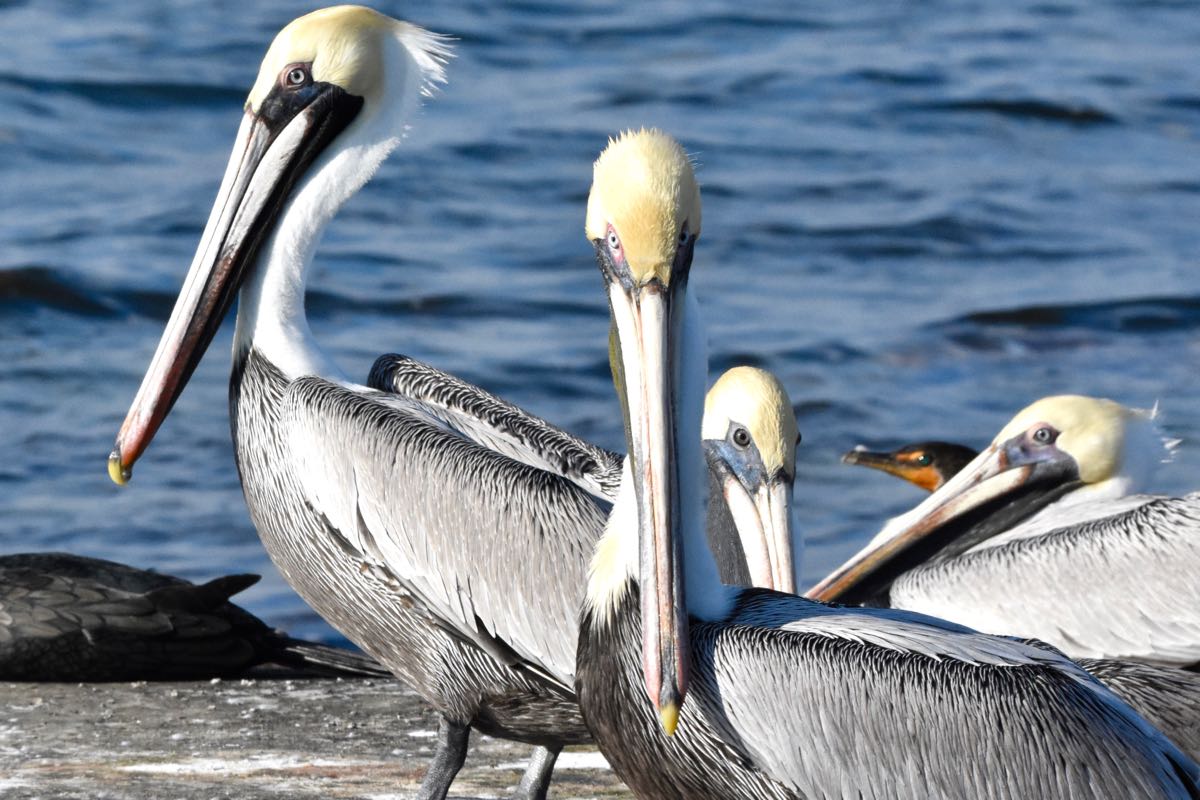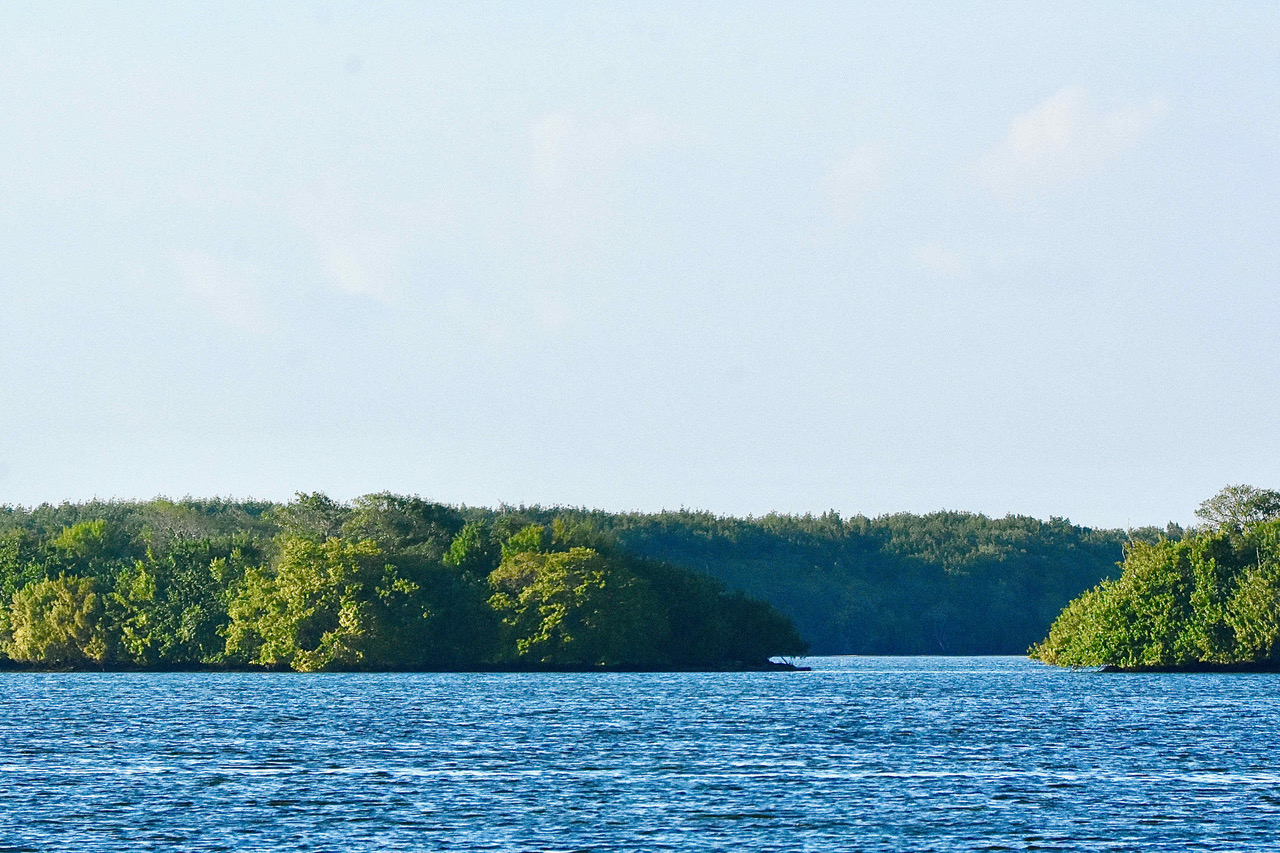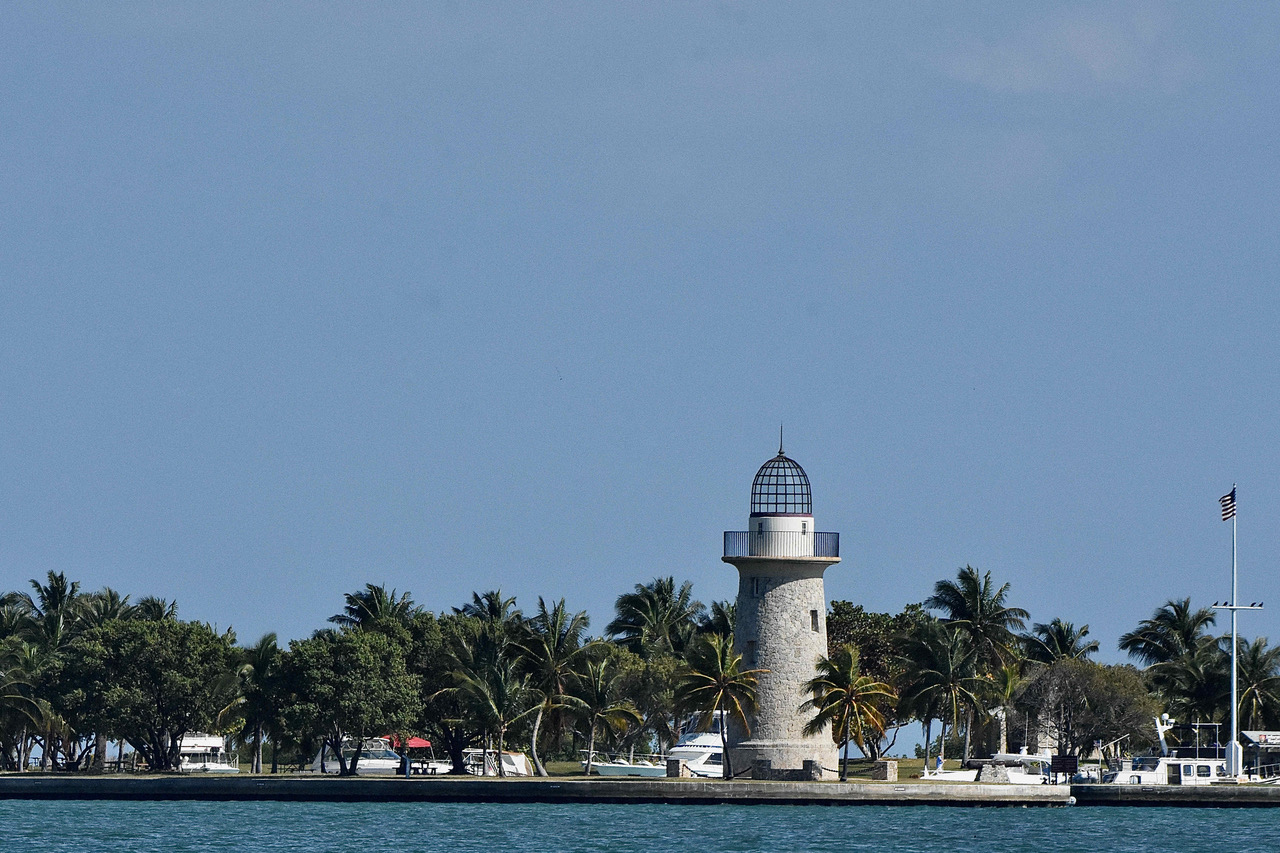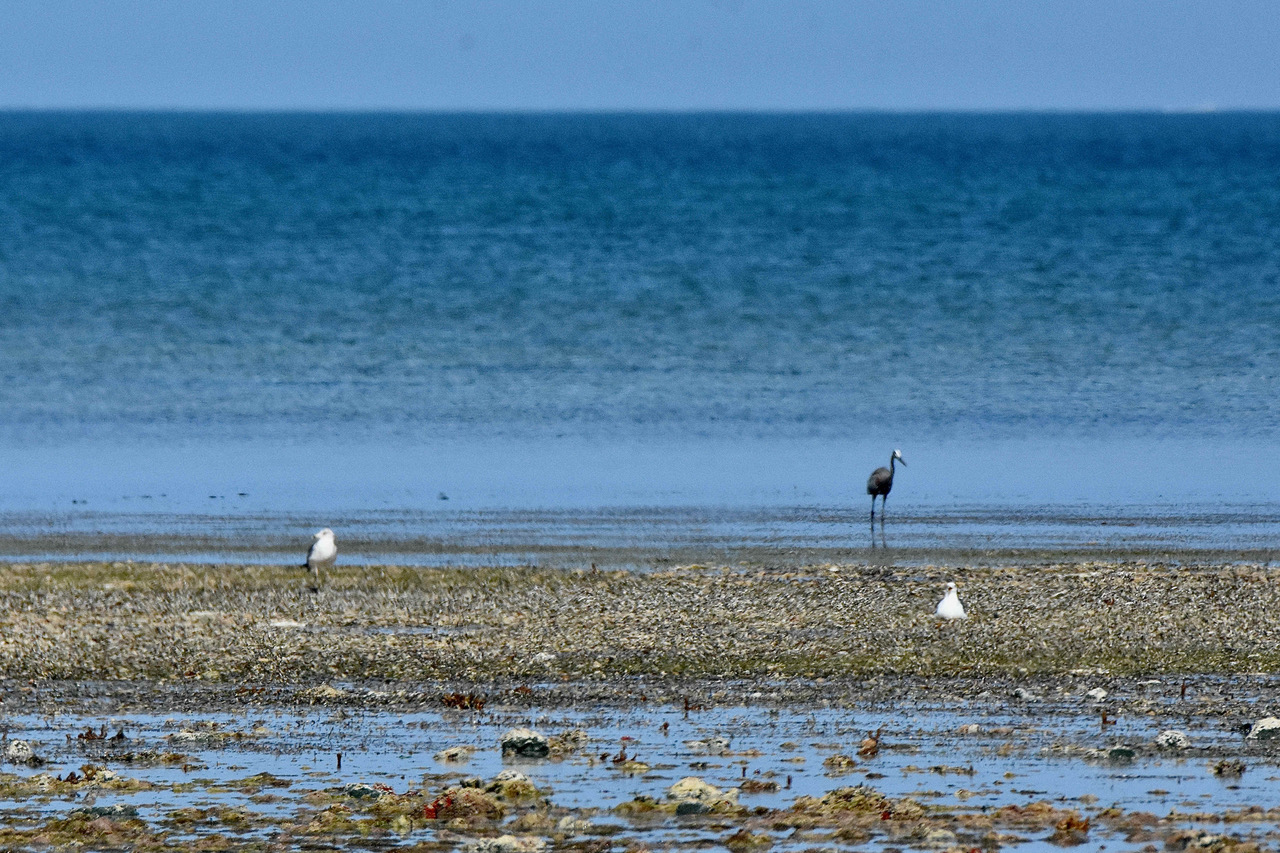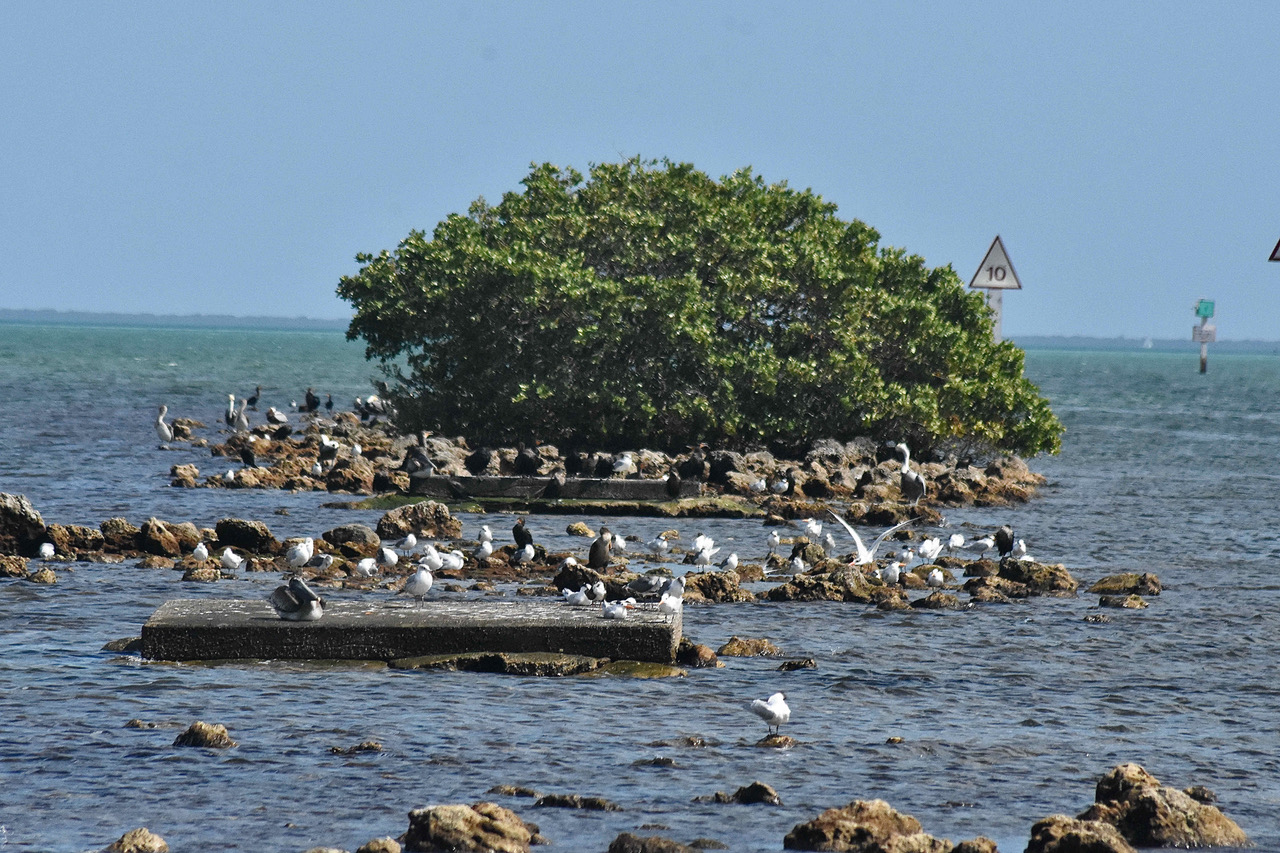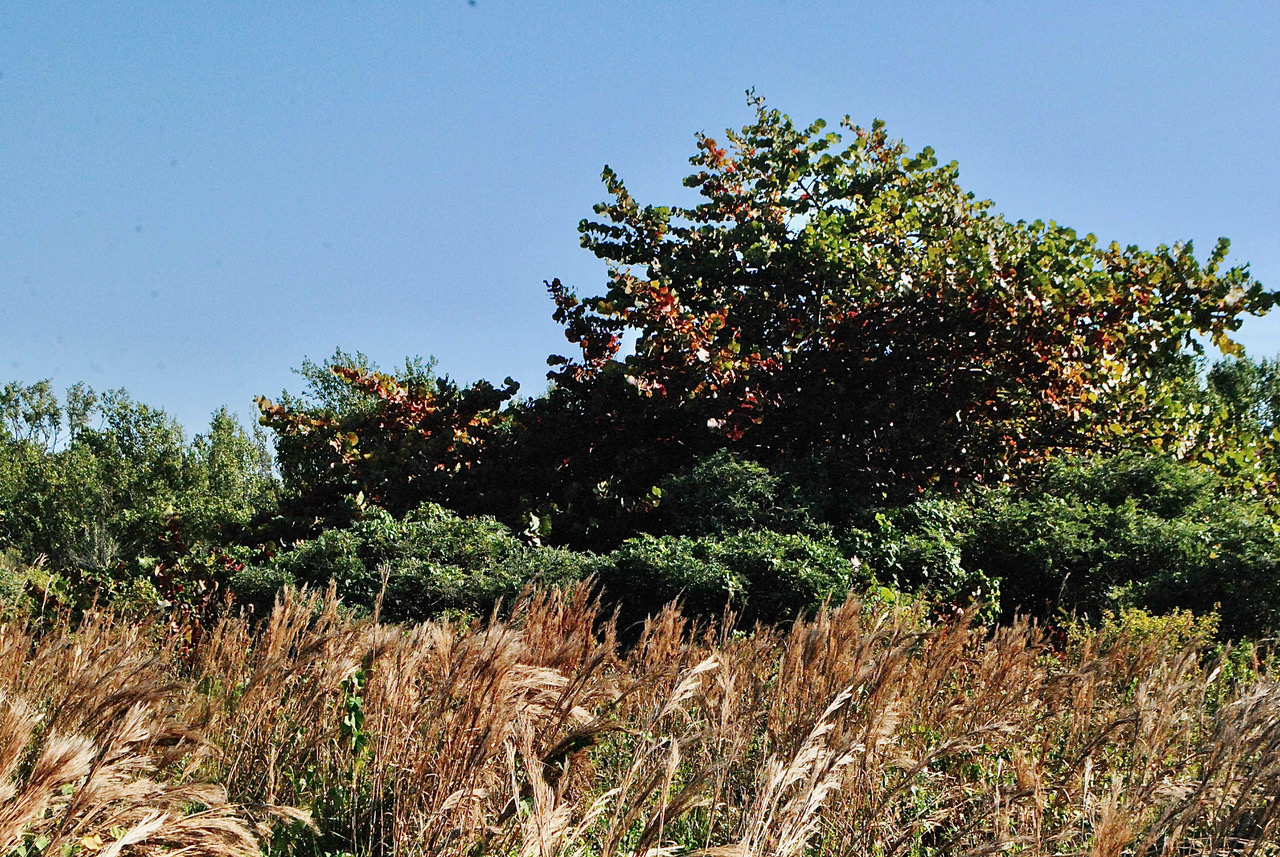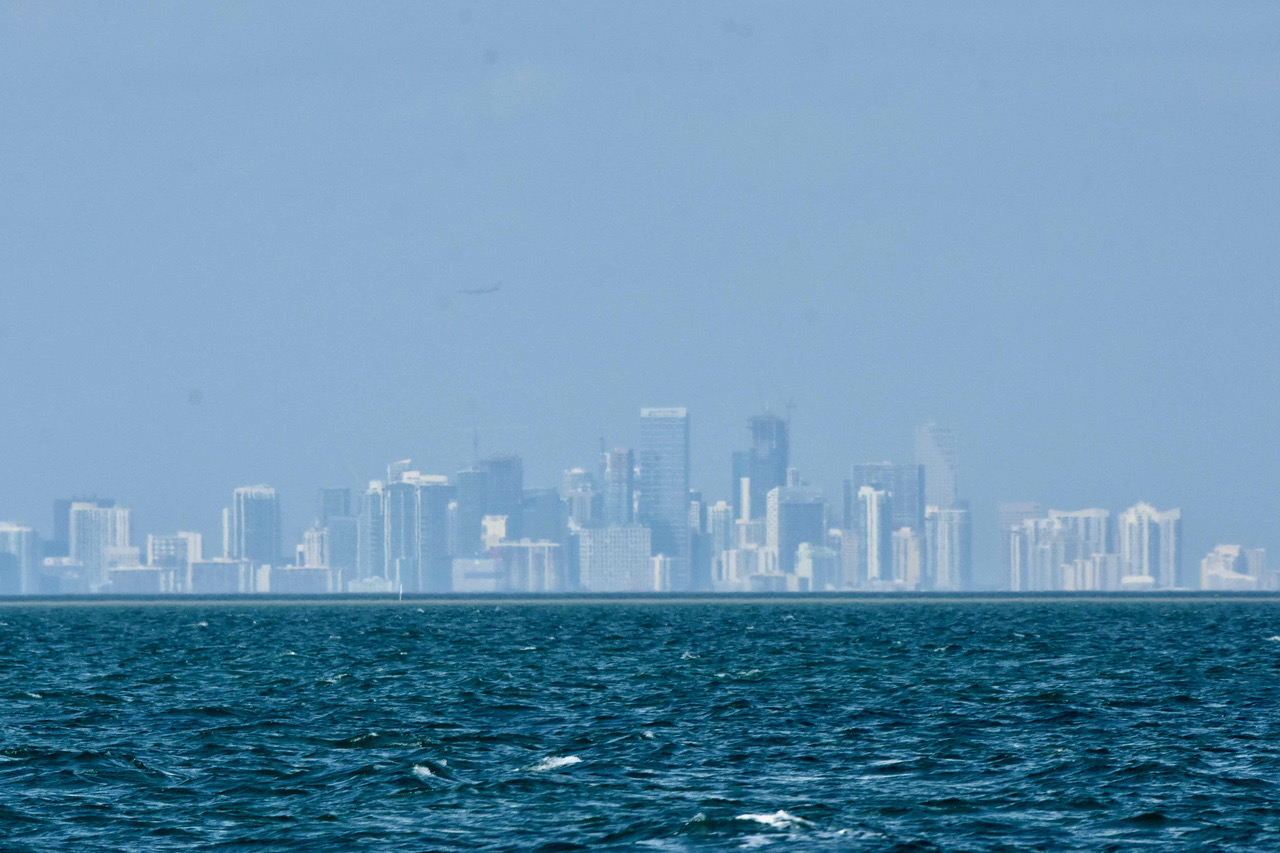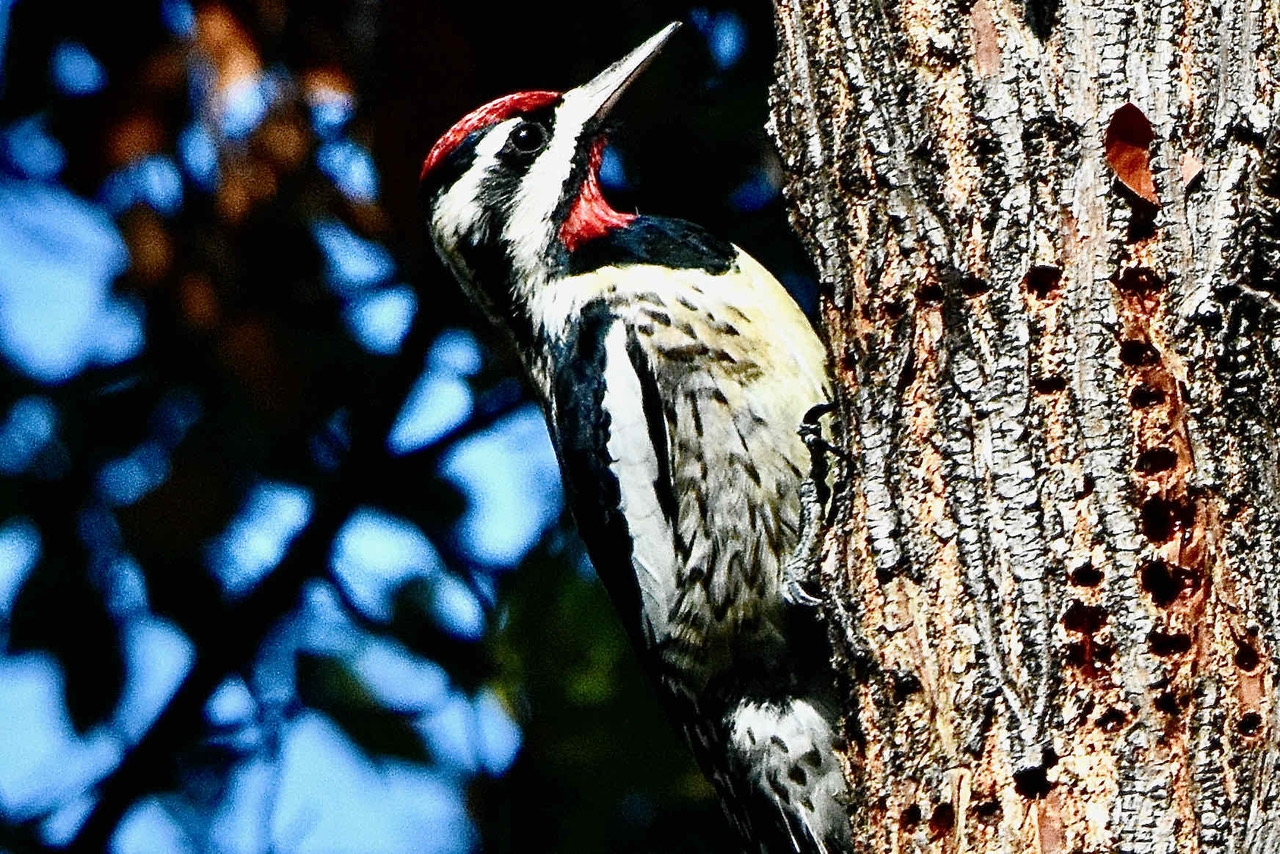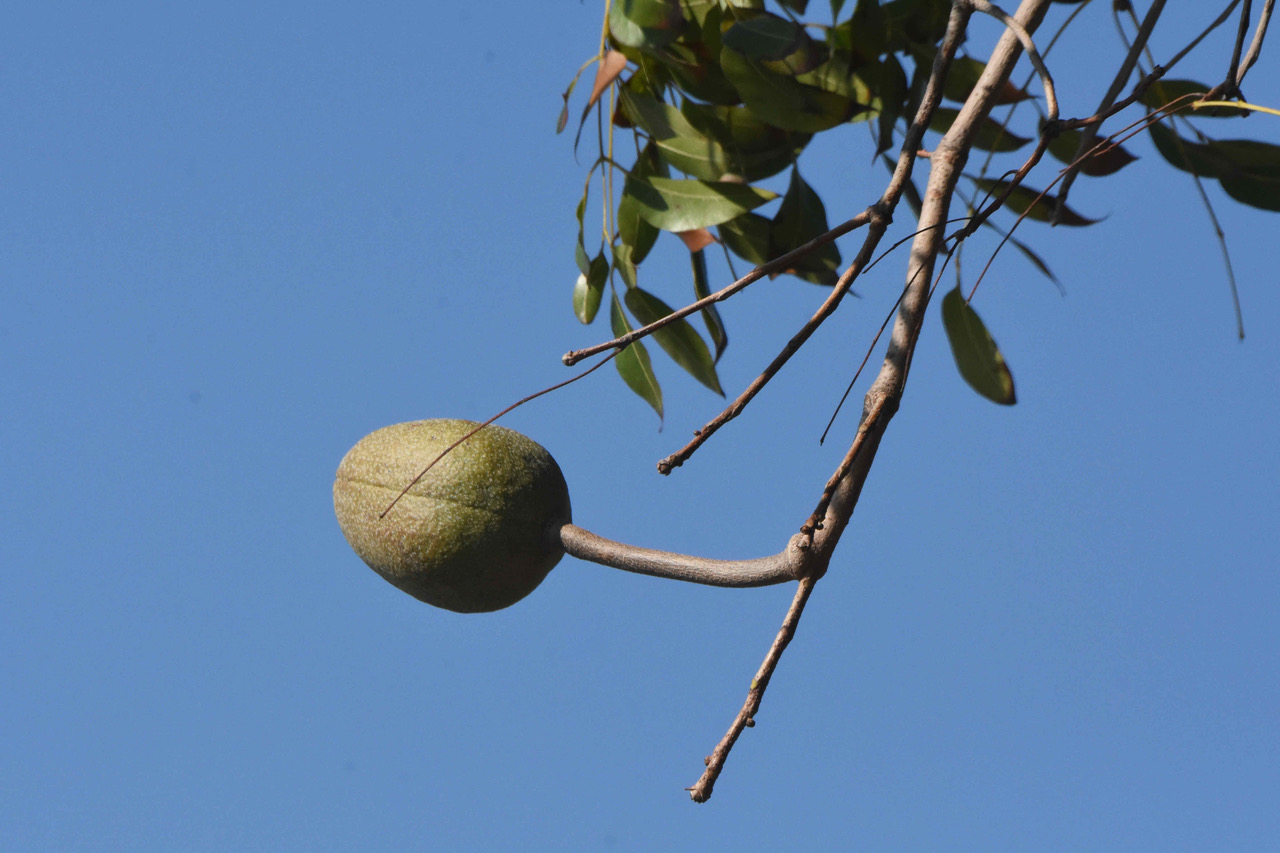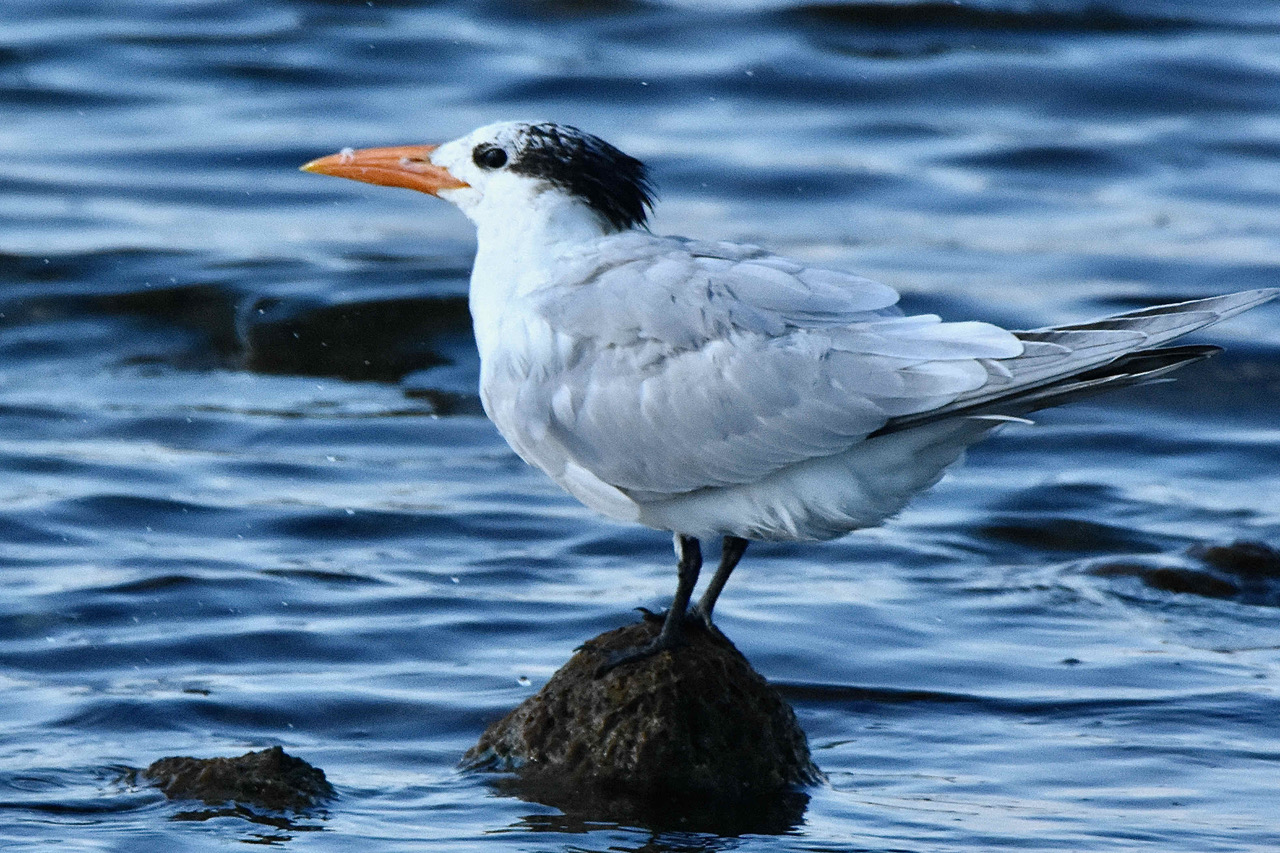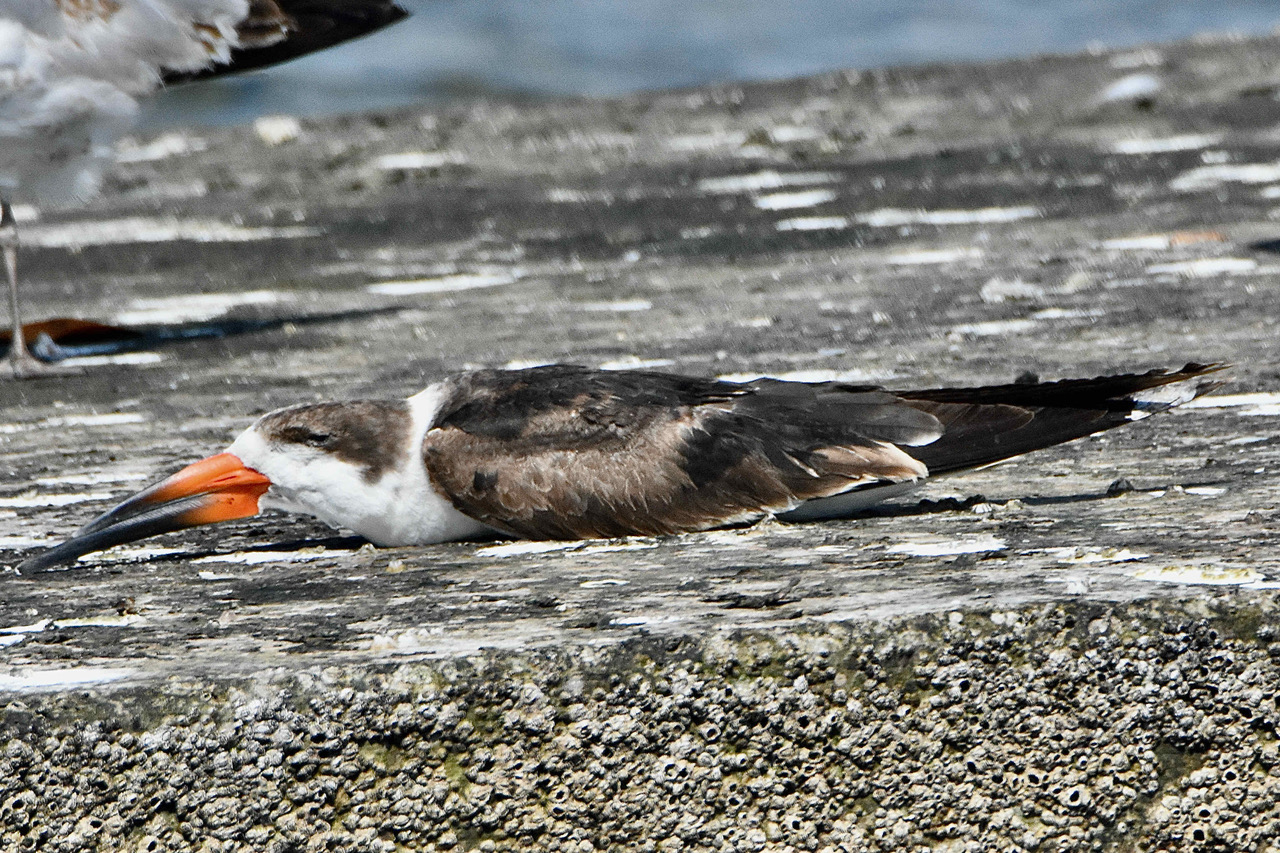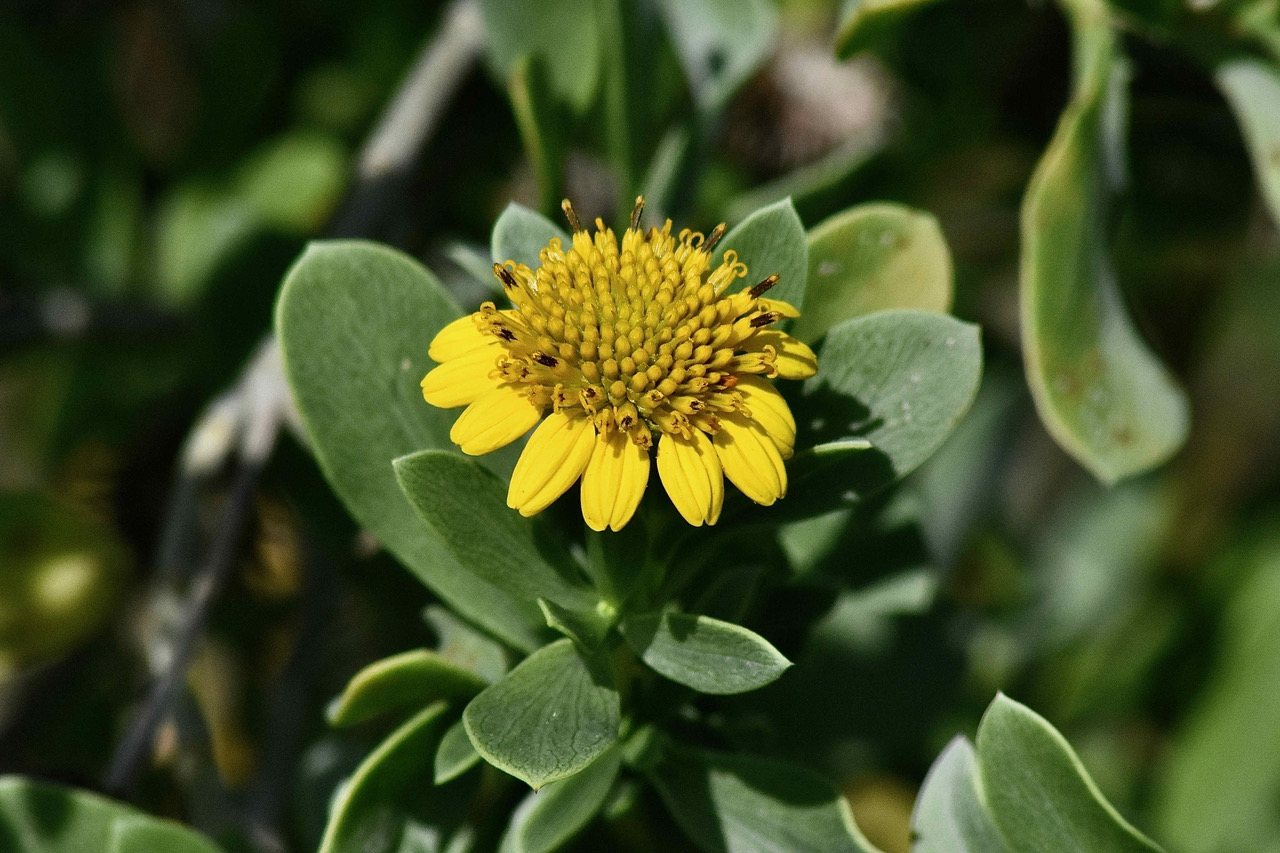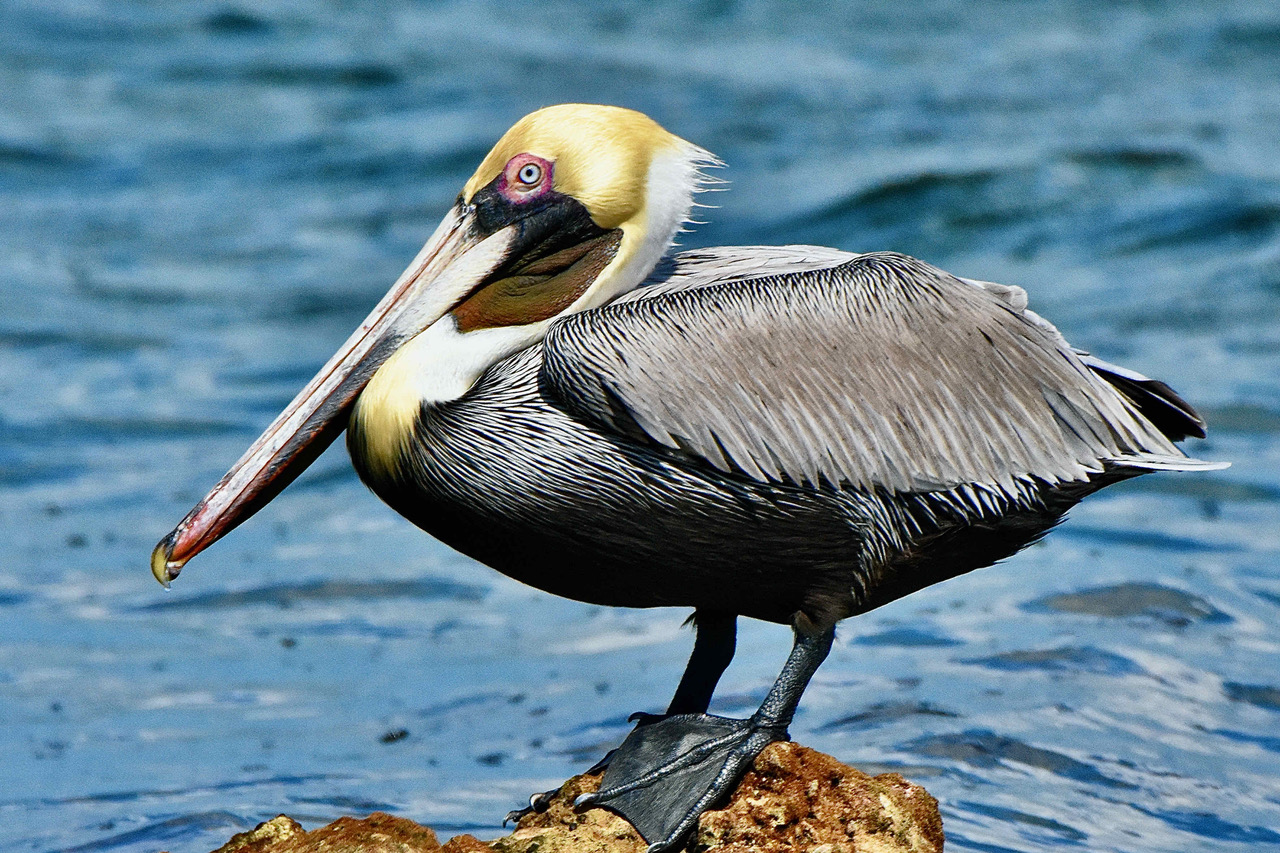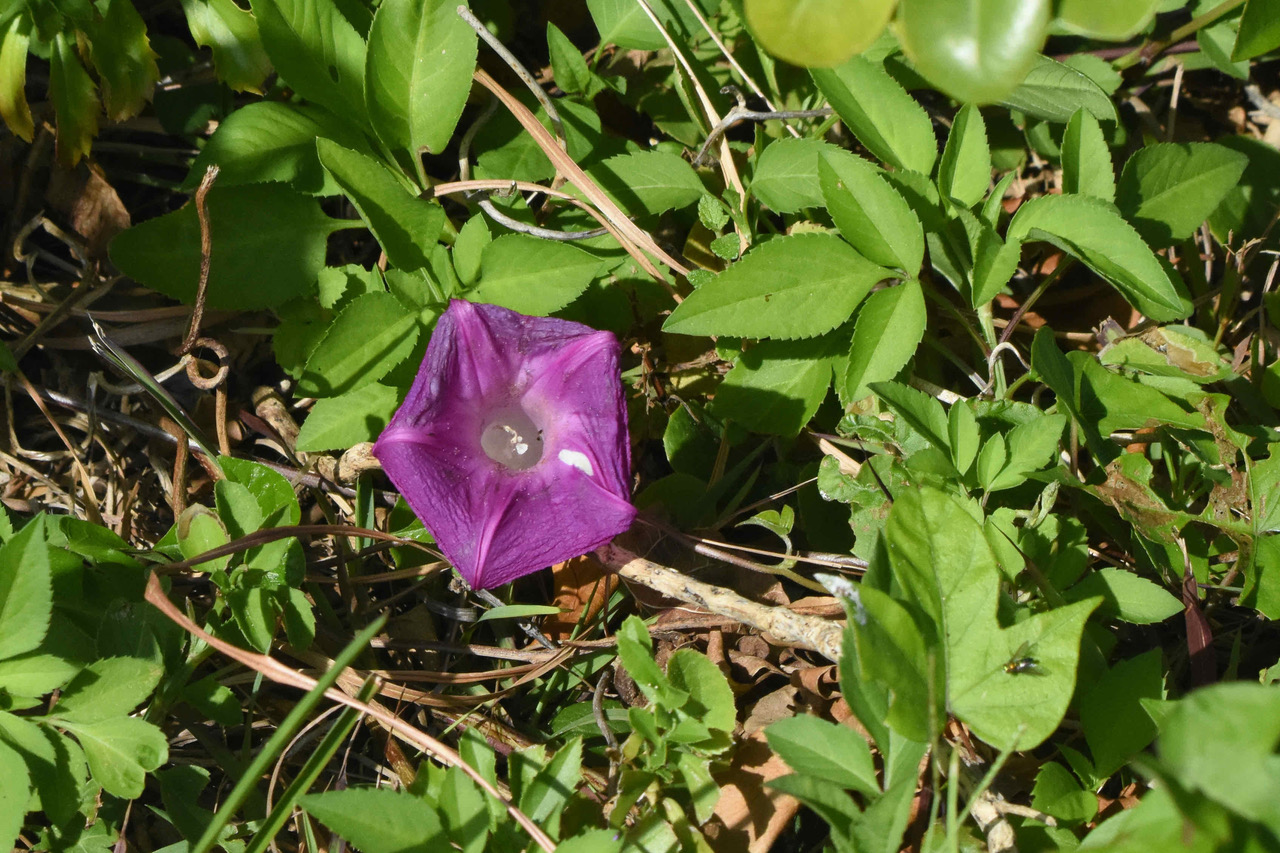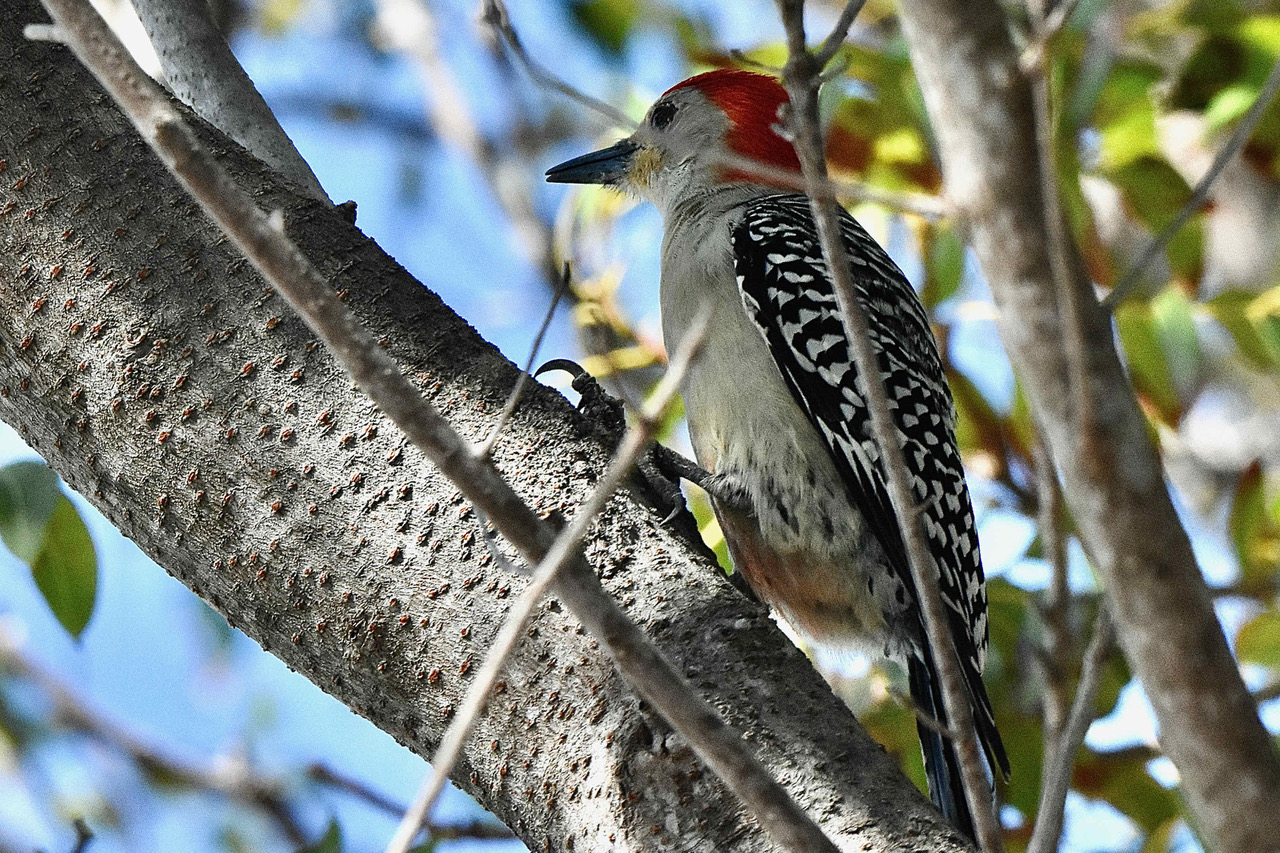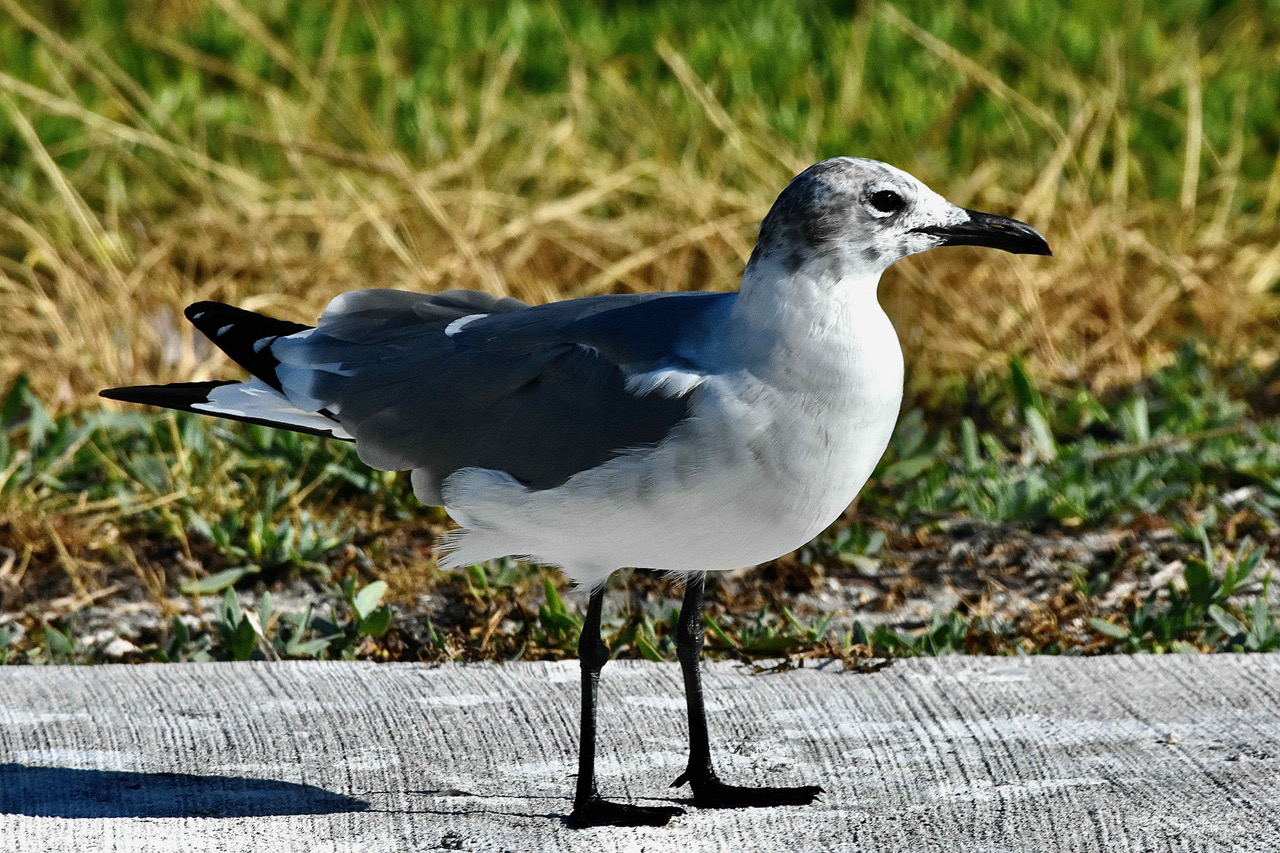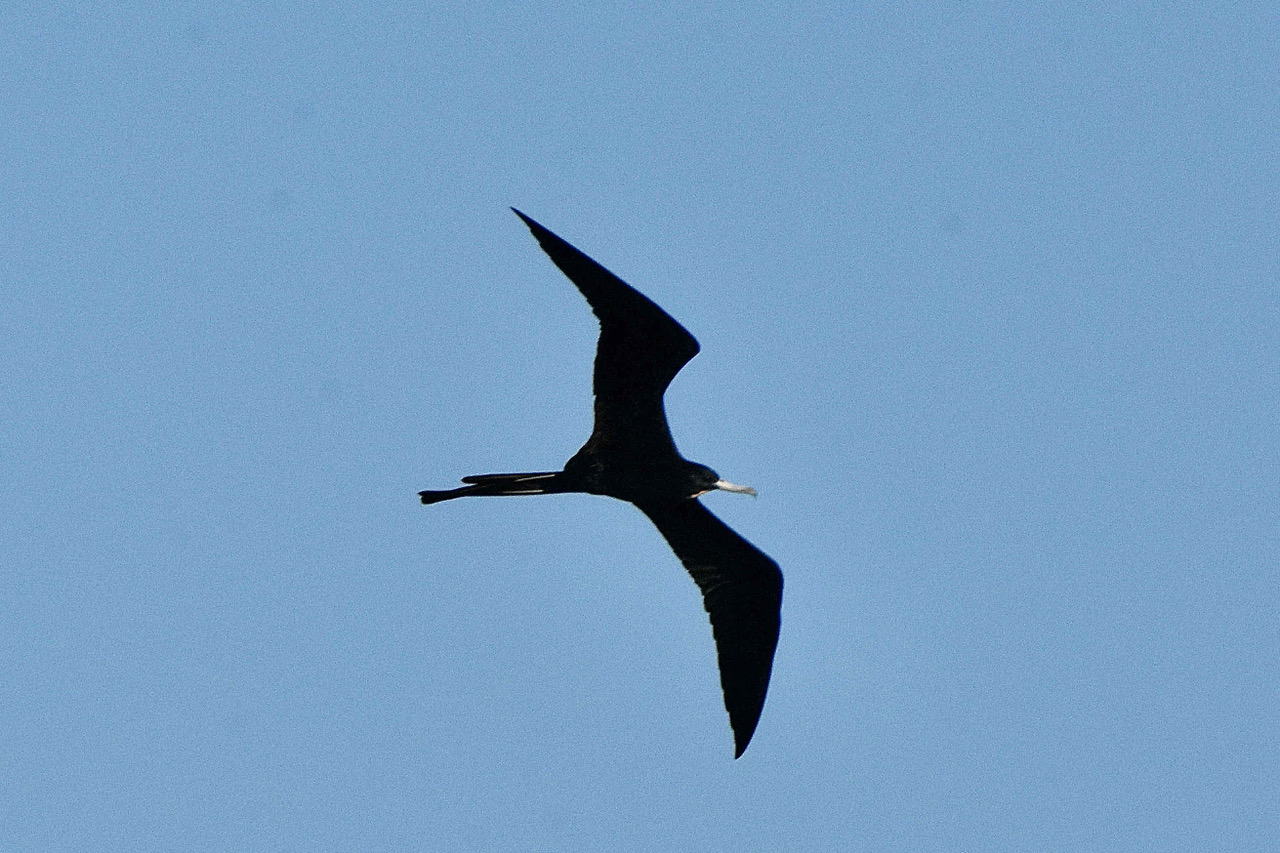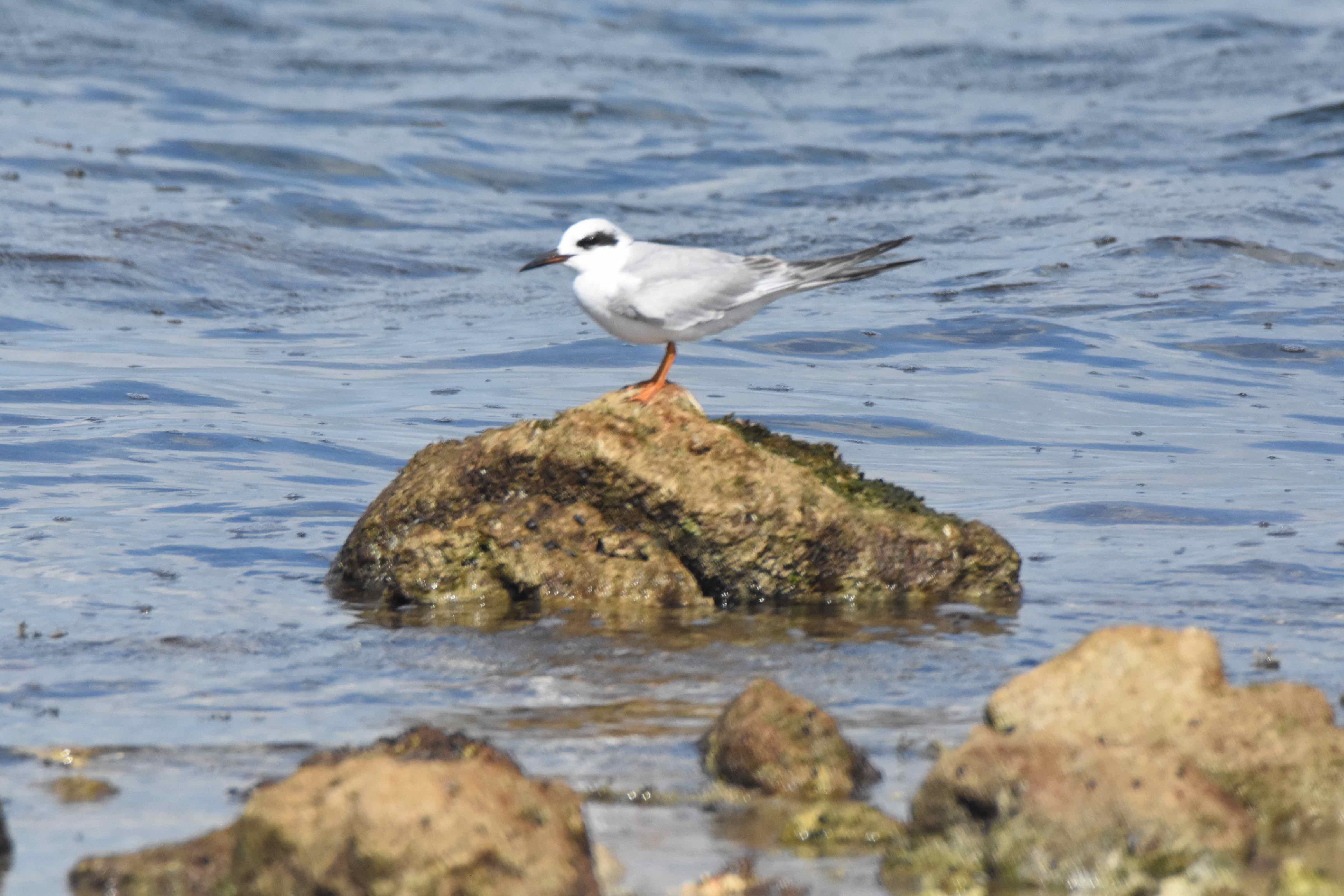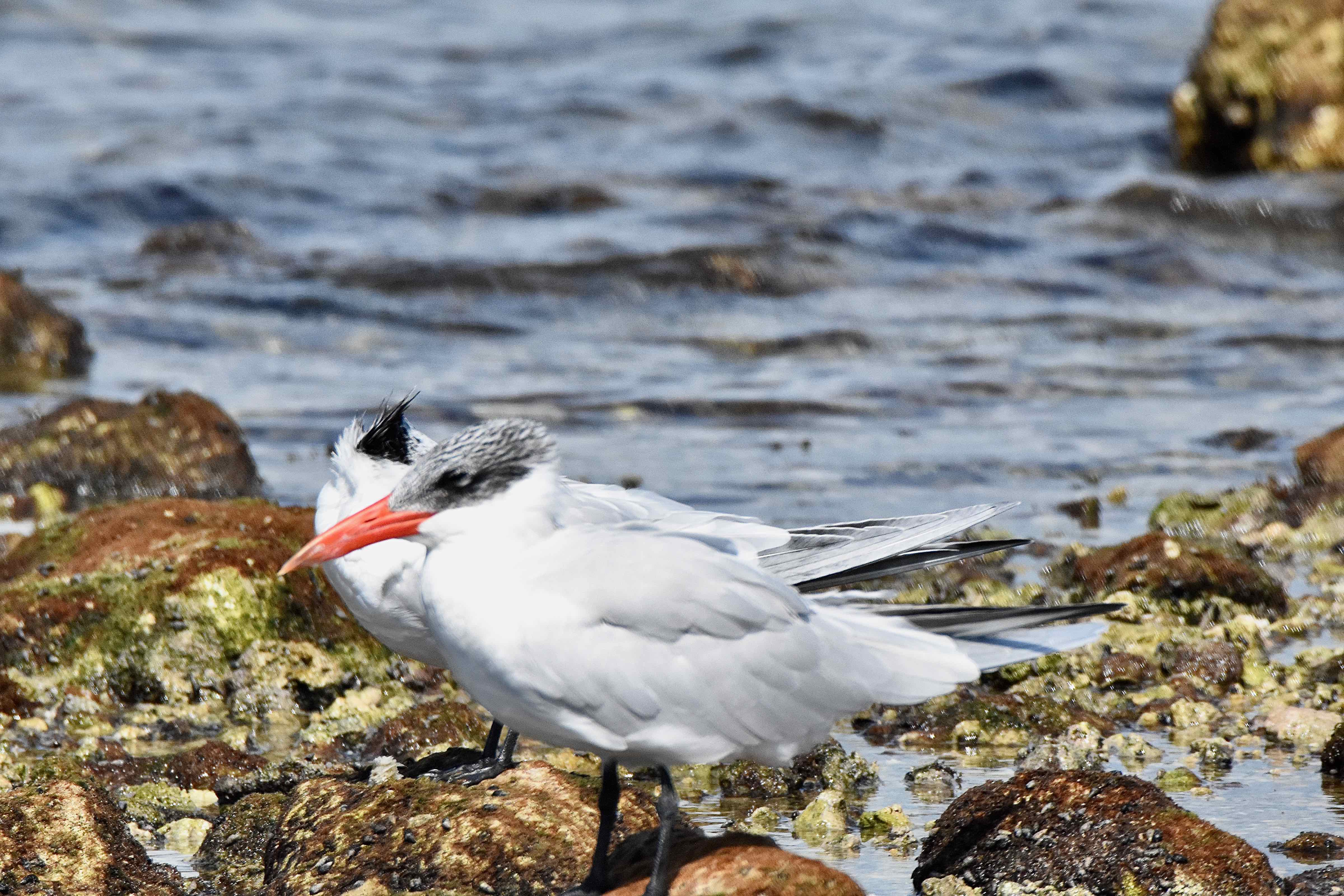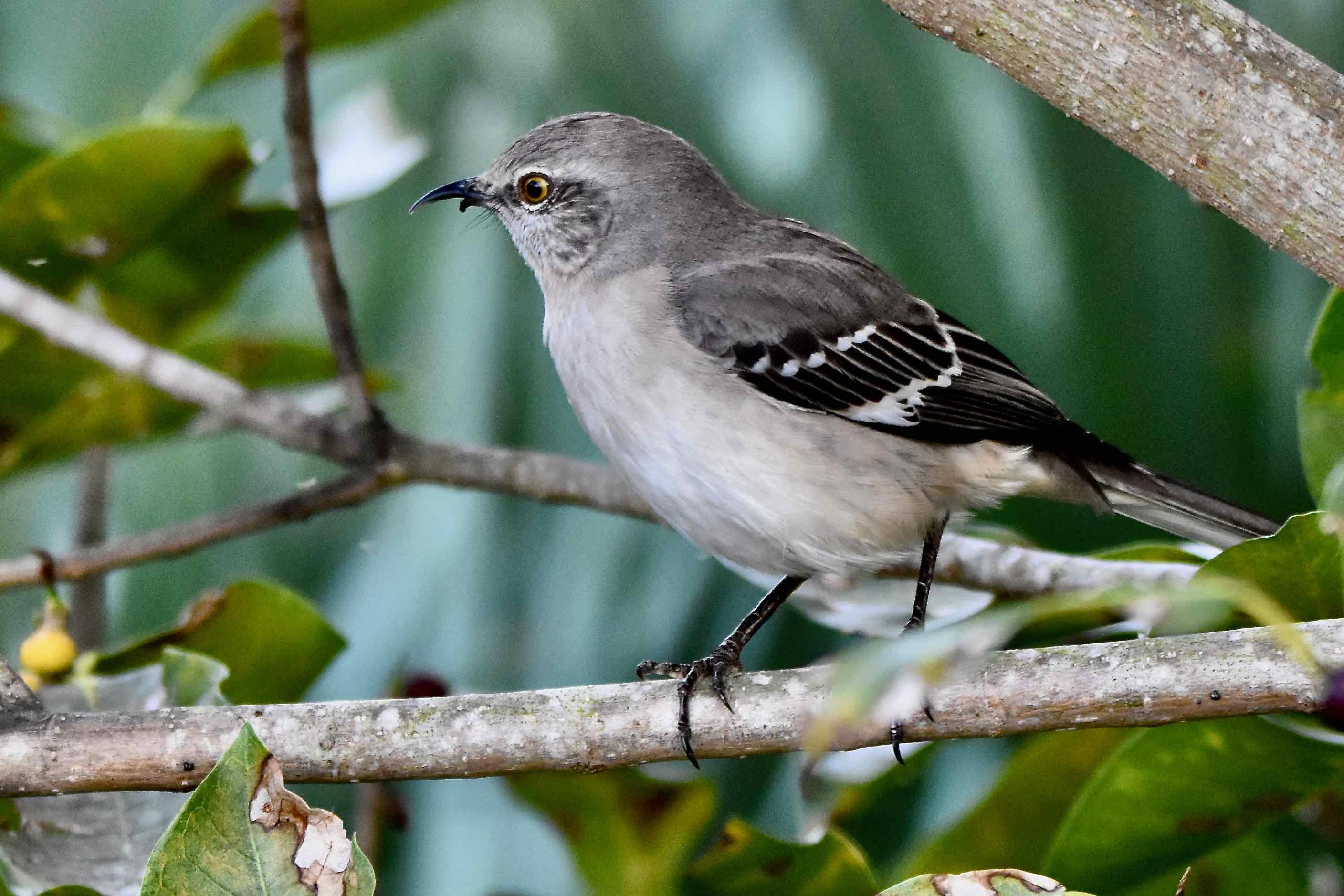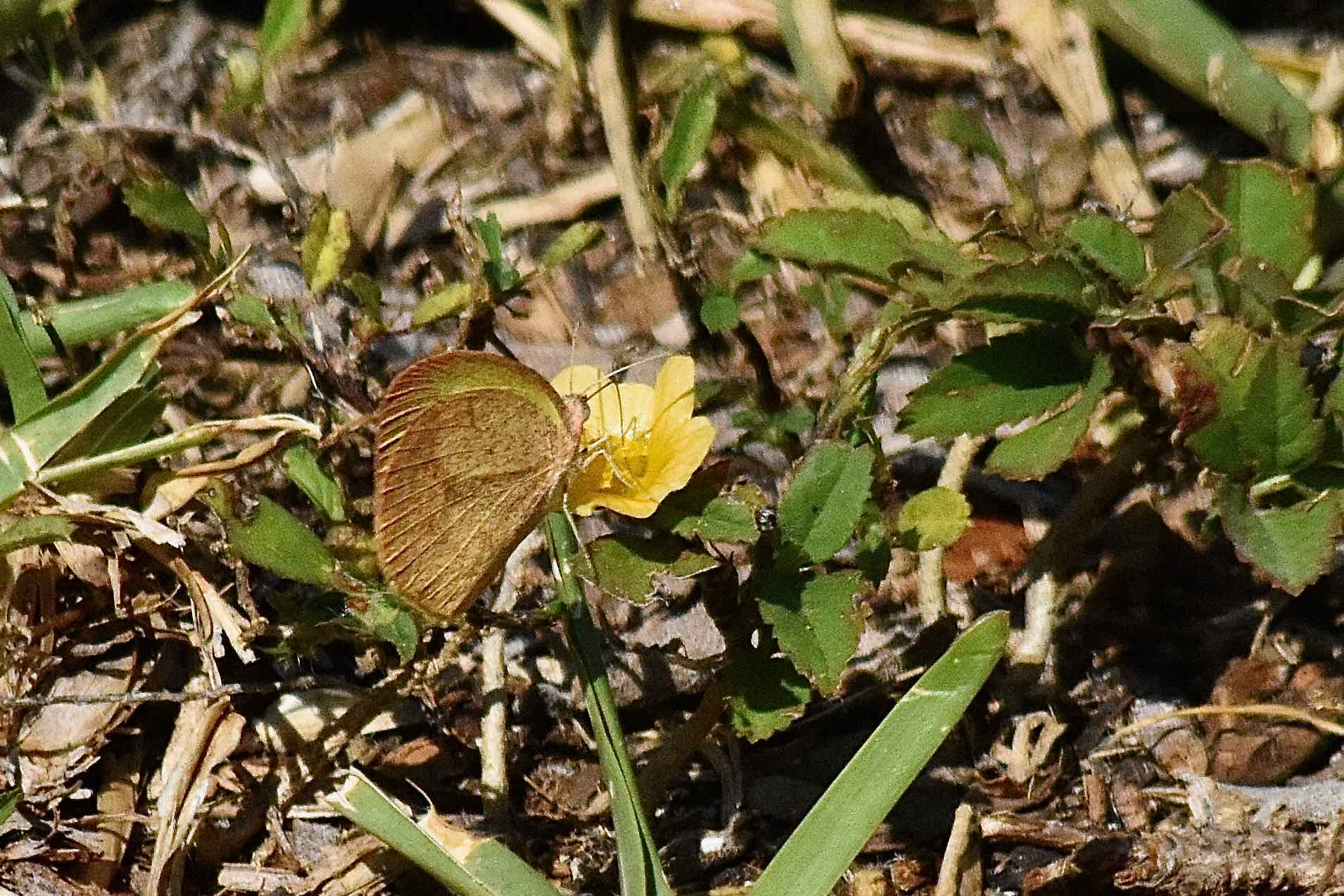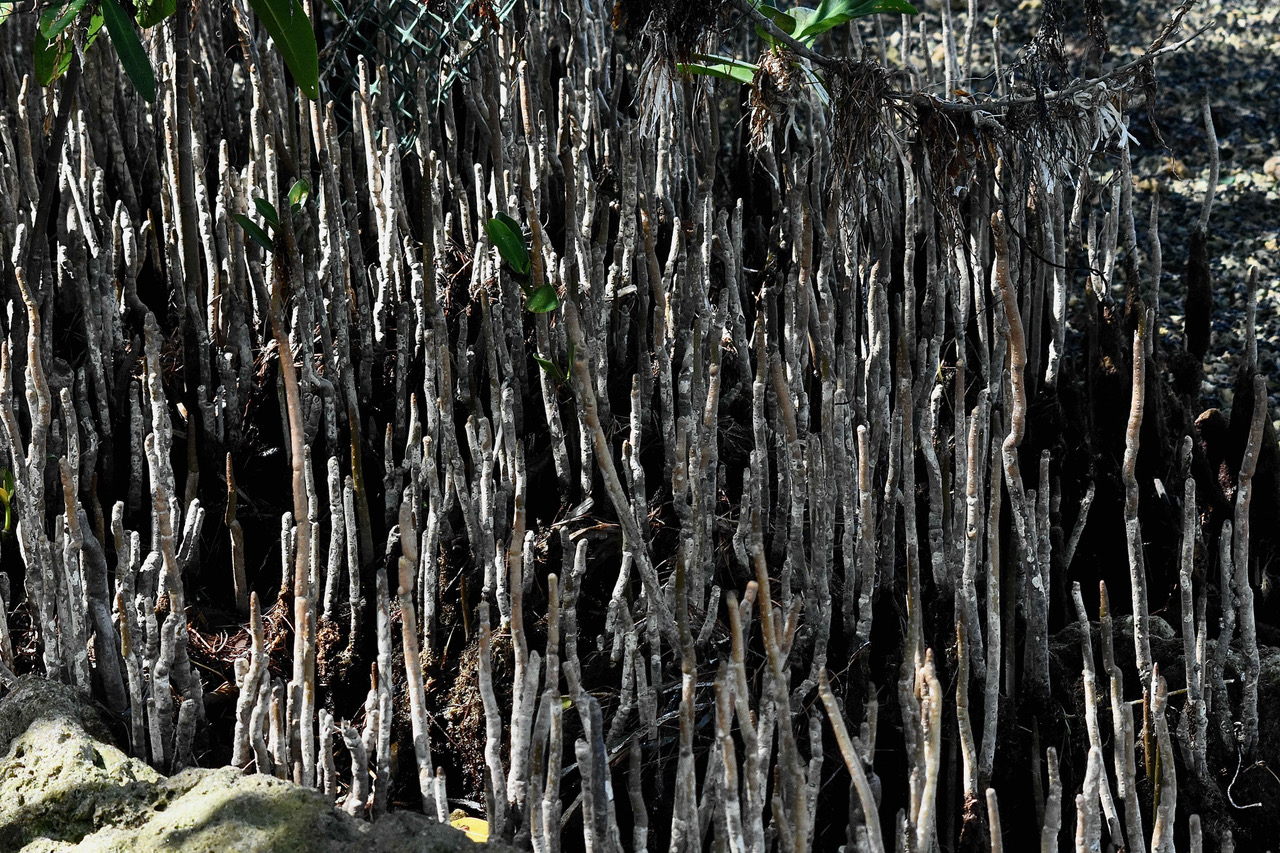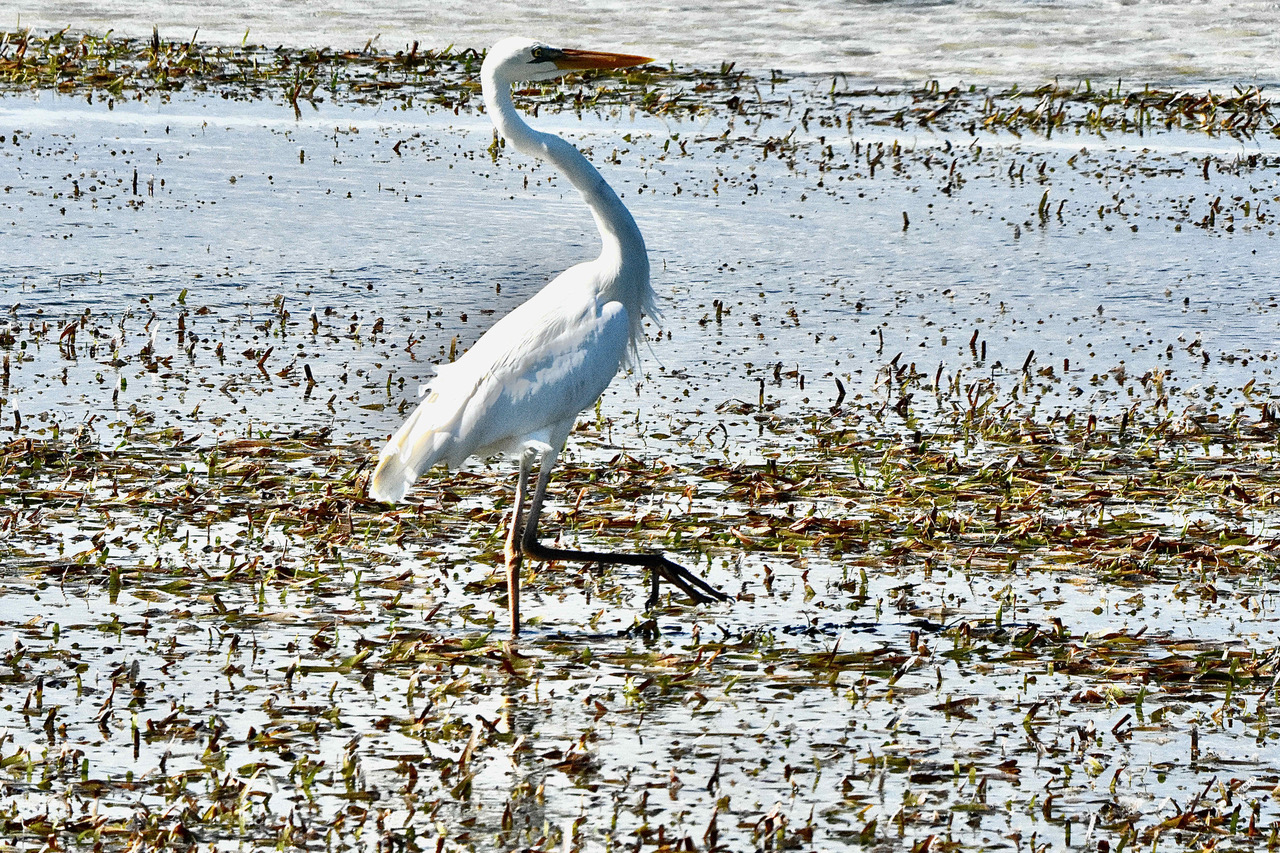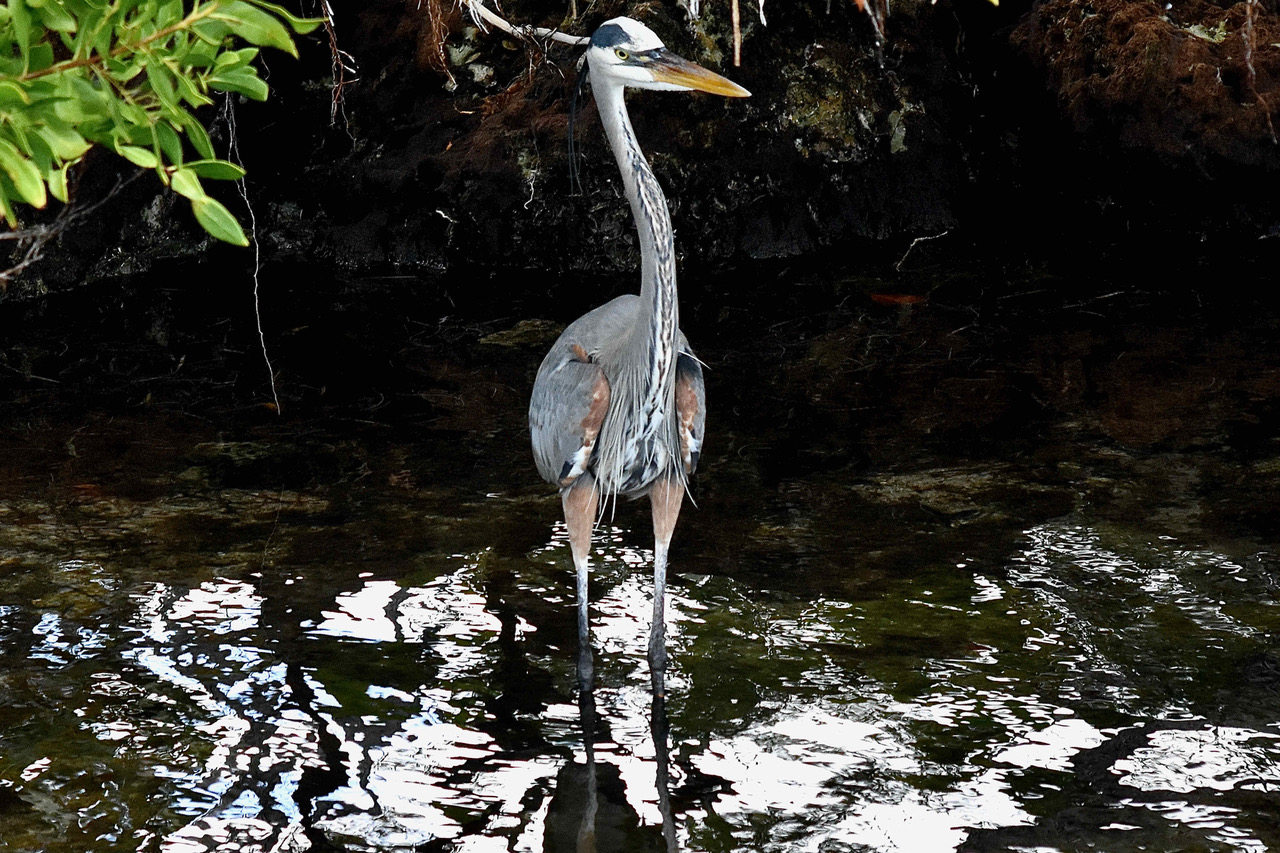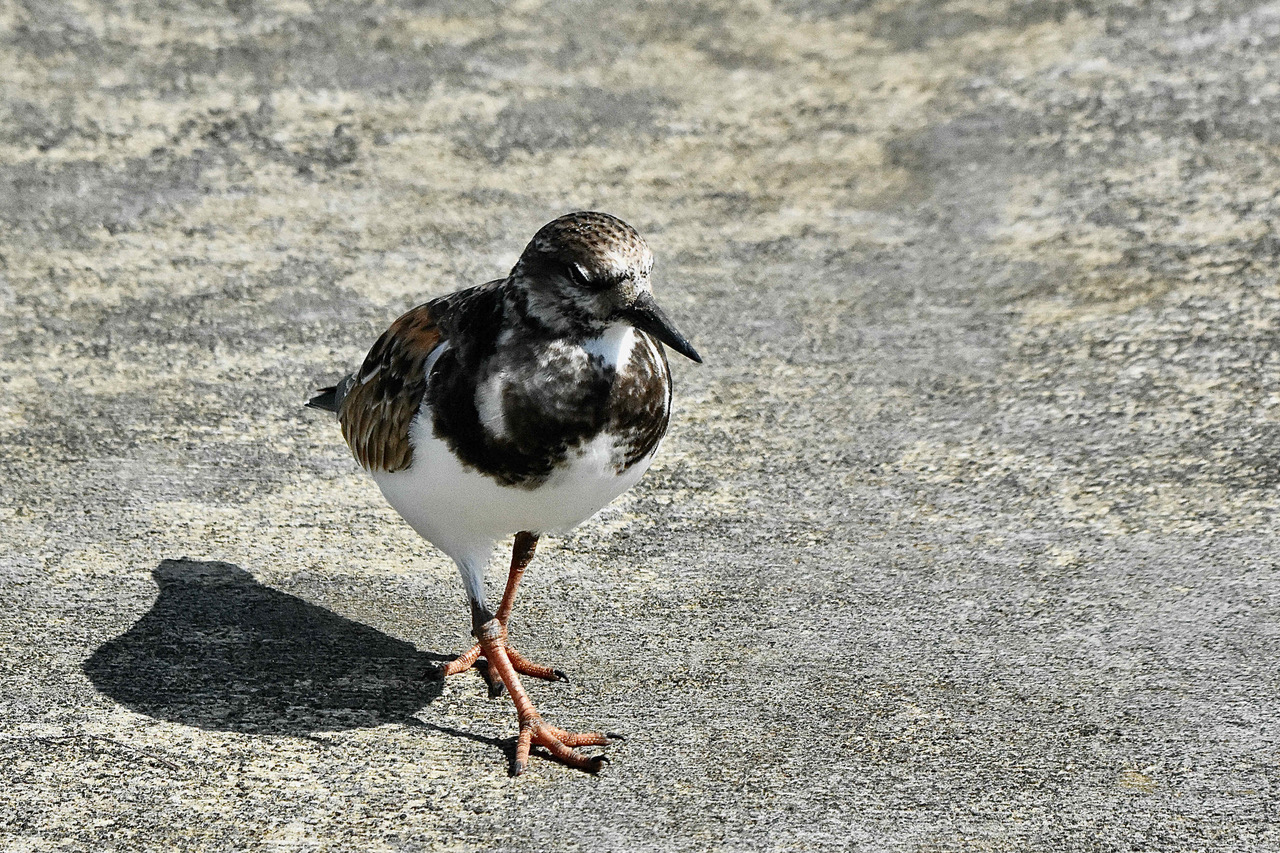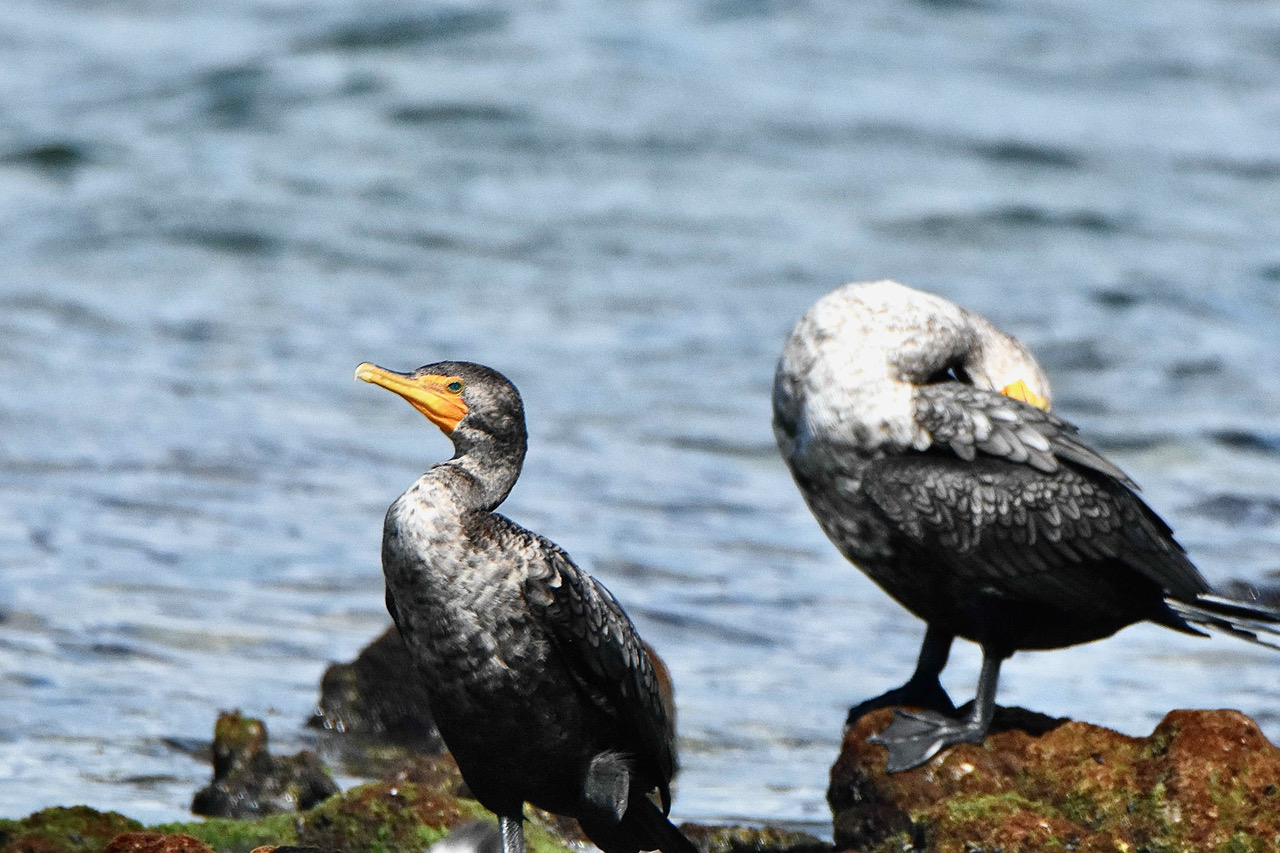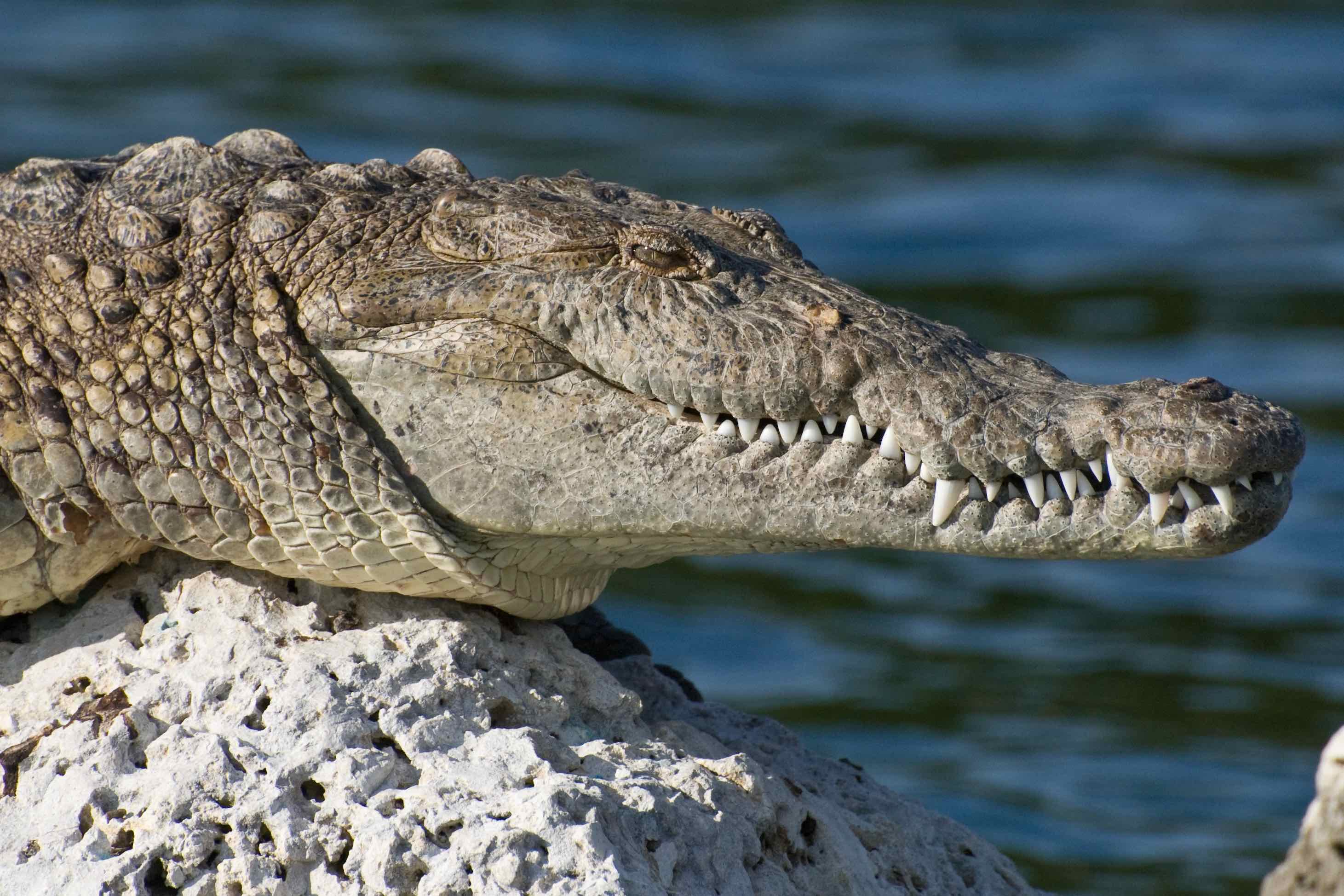Overview: Water, water everywhere. In fact Biscayne National Park has nearly 174,000 acres of it. Water for boating. Water for sailing. Water for snorkeling. Water for paddle boarding and kayaking. And under that water is North America's only living barrier coral reef, home to more than 500 species of fish, 50 species of coral, sea turtles, lobsters and more. There are ship wrecks for diving and mangrove covered islands for exploring. If you're lucky, you might spot a whale, a pod of dolphins or, closer to shore, the rare and reclusive American crocodile.
As you might guess, Biscayne National Park — the northern-most point of the Florida Keys — is best seen by boat, by canoe or kayak. Don't have one? There are tours available at the park. Check the website for details. There's also the Dante Fascell Visitor's Center, which has exhibits of the four ecosystems within the park, and the quarter-mile jetty trail to explore. You might spot a magnificent frigatebird soaring overhead or a great white heron foraging along the mangroves. Walk to the end of the trail and you'll see dozens of sea-going birds sunning themselves on rocks and large chunks of concrete that mark the end of the jetty. It's enough to qualify Biscayne for inclusion on the Great Florida Birding Trail. We should also note that the park offers some of the finest sport-fishing in the world.
History: There might not be a better example of the difference an enlightened citizenry can make when it comes together to fight powerful interests than Biscayne National Park. It simply would not exist without the determination of ordinary folk who took on the ultra rich who wanted to use the bay for their own ends.
People have been using the natural resources and enjoying the natural beauty of Biscayne Bay for 10,000 years, but in the early 1960s, developers eyed the bay as the site for a massive industrial port called Seadade. A small group of citizens united in opposition to the proposal and ignited a years long battle to preserve the bay. Preservationists ultimately won the day when President Lyndon Baines Johnson in 1968 signed legislation creating Biscayne National Monument, becoming Biscayne National Park in 1980.
No history of the park can be complete without mentioning Lancelot Jones, whose father, Israel, a Black man born in Raleigh, N.C., in 1858, bought Porgy Key in 1897, Old Rhodes Key in 1898 and Totten Key in 1911. The Jones family successfully farmed the land for years, growing pineapples and key limes. In 1929, Israel handed ownership of the land to his sons, Arthur and Lancelot. When the farming business turned south, Lancelot and Arthur turned to work as fishing guides, building a list of clientele that included three presidents. Arthur Jones died in 1966 as the battle over the bay heated up. Lancelot Jones, the largest landholder in the area designated for the port, held out against developers, ultimately selling his land to the federal government for inclusion in the new the park so the bay could be a place anyone could enjoy. The Jones homesite on Porgy Key is included on the National Register of Historic Places.
What You'll See: Biscayne National Park is vast and diverse, about 174,000 acres, extending from just south of Key Biscayne and Cape Florida to Key Largo. Most of those 174,000 acres are water, dotted with numerous islands, some small, some larger. With a boat you might see dolphins, sea turtles, manatees, perhaps even a whale, and of course any of the dozens of species of birds that use the park. Without a boat, there is the Jetty Trail at Convoy Point, which isn't a bad place to bird watch.
Amenities: The Convoy Point section of Biscayne National Park offers the Dante Fascell Visitors Center, with displays of the ecosystems found in the park. There are restrooms and drinking water at the center. There is a canoe/kayak launch as well at Convoy Point. Camping is available on a first-come basis on Boca Chita and Elliott keys. There is a nightly fee. By the way, the name of the center honors the late Miami congressman who championed the legislation creating the park.
Nearby: Everglades National Park is west of Homestead, 18 miles from from Biscayne National Park. The Southern Glades Wildlife and Environmental Area is just east of Everglades National Park.
Links: The Institute for Regional Conservation's plant inventory for Biscayne National Park is here. The Great Florida Birding Trail take on the park is here.
Of Note: The Convoy Point section of the park, which includes a canoe/kayak launch and jetty trail, close at 5:30 p.m. The Dante Fascell Visitor's Center closes daily at 5 p.m. Navigable waters remain open 24 hours. Entry to the park is free.
Cover Photo: Biscayne National Park is without doubt the best single place for sea birds that we've visited. More variety and more numbers. And we just like this photo of brown pelicans sitting on the jetty, with their stern looks as if they're standing on guard, to represent the park.
As you might guess, Biscayne National Park — the northern-most point of the Florida Keys — is best seen by boat, by canoe or kayak. Don't have one? There are tours available at the park. Check the website for details. There's also the Dante Fascell Visitor's Center, which has exhibits of the four ecosystems within the park, and the quarter-mile jetty trail to explore. You might spot a magnificent frigatebird soaring overhead or a great white heron foraging along the mangroves. Walk to the end of the trail and you'll see dozens of sea-going birds sunning themselves on rocks and large chunks of concrete that mark the end of the jetty. It's enough to qualify Biscayne for inclusion on the Great Florida Birding Trail. We should also note that the park offers some of the finest sport-fishing in the world.
History: There might not be a better example of the difference an enlightened citizenry can make when it comes together to fight powerful interests than Biscayne National Park. It simply would not exist without the determination of ordinary folk who took on the ultra rich who wanted to use the bay for their own ends.
People have been using the natural resources and enjoying the natural beauty of Biscayne Bay for 10,000 years, but in the early 1960s, developers eyed the bay as the site for a massive industrial port called Seadade. A small group of citizens united in opposition to the proposal and ignited a years long battle to preserve the bay. Preservationists ultimately won the day when President Lyndon Baines Johnson in 1968 signed legislation creating Biscayne National Monument, becoming Biscayne National Park in 1980.
No history of the park can be complete without mentioning Lancelot Jones, whose father, Israel, a Black man born in Raleigh, N.C., in 1858, bought Porgy Key in 1897, Old Rhodes Key in 1898 and Totten Key in 1911. The Jones family successfully farmed the land for years, growing pineapples and key limes. In 1929, Israel handed ownership of the land to his sons, Arthur and Lancelot. When the farming business turned south, Lancelot and Arthur turned to work as fishing guides, building a list of clientele that included three presidents. Arthur Jones died in 1966 as the battle over the bay heated up. Lancelot Jones, the largest landholder in the area designated for the port, held out against developers, ultimately selling his land to the federal government for inclusion in the new the park so the bay could be a place anyone could enjoy. The Jones homesite on Porgy Key is included on the National Register of Historic Places.
What You'll See: Biscayne National Park is vast and diverse, about 174,000 acres, extending from just south of Key Biscayne and Cape Florida to Key Largo. Most of those 174,000 acres are water, dotted with numerous islands, some small, some larger. With a boat you might see dolphins, sea turtles, manatees, perhaps even a whale, and of course any of the dozens of species of birds that use the park. Without a boat, there is the Jetty Trail at Convoy Point, which isn't a bad place to bird watch.
Amenities: The Convoy Point section of Biscayne National Park offers the Dante Fascell Visitors Center, with displays of the ecosystems found in the park. There are restrooms and drinking water at the center. There is a canoe/kayak launch as well at Convoy Point. Camping is available on a first-come basis on Boca Chita and Elliott keys. There is a nightly fee. By the way, the name of the center honors the late Miami congressman who championed the legislation creating the park.
Nearby: Everglades National Park is west of Homestead, 18 miles from from Biscayne National Park. The Southern Glades Wildlife and Environmental Area is just east of Everglades National Park.
Links: The Institute for Regional Conservation's plant inventory for Biscayne National Park is here. The Great Florida Birding Trail take on the park is here.
Of Note: The Convoy Point section of the park, which includes a canoe/kayak launch and jetty trail, close at 5:30 p.m. The Dante Fascell Visitor's Center closes daily at 5 p.m. Navigable waters remain open 24 hours. Entry to the park is free.
Cover Photo: Biscayne National Park is without doubt the best single place for sea birds that we've visited. More variety and more numbers. And we just like this photo of brown pelicans sitting on the jetty, with their stern looks as if they're standing on guard, to represent the park.

